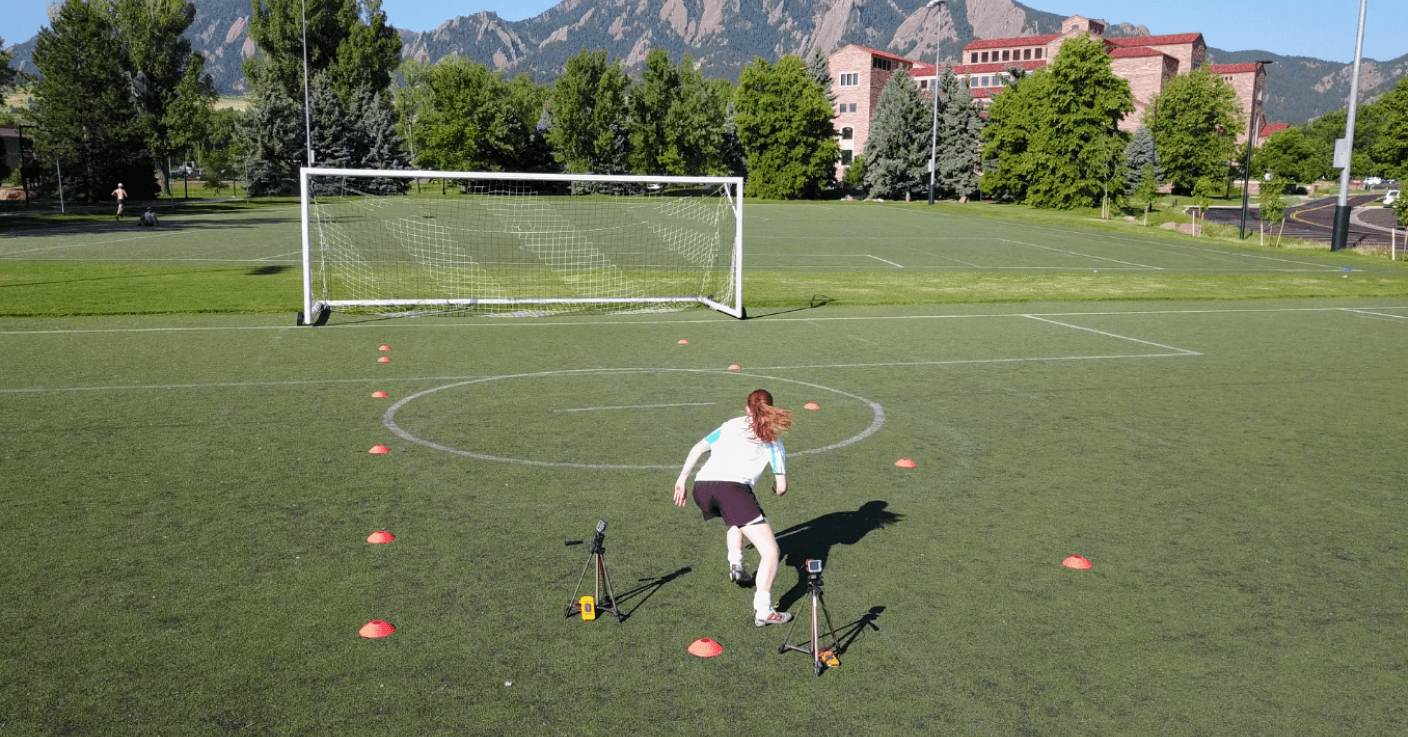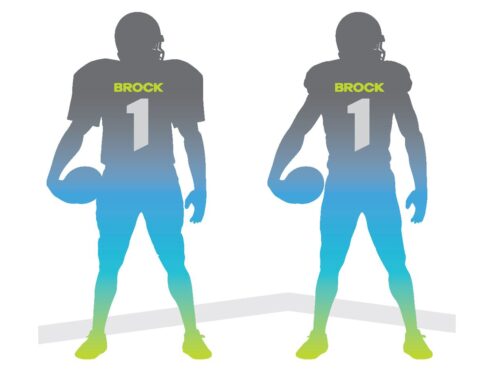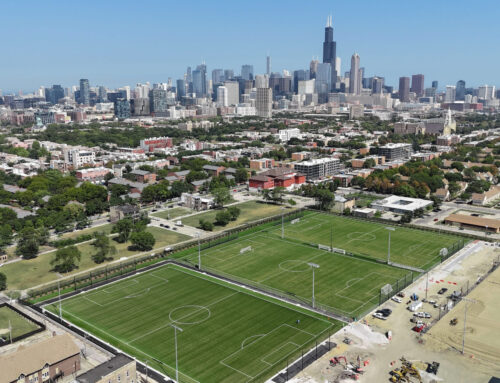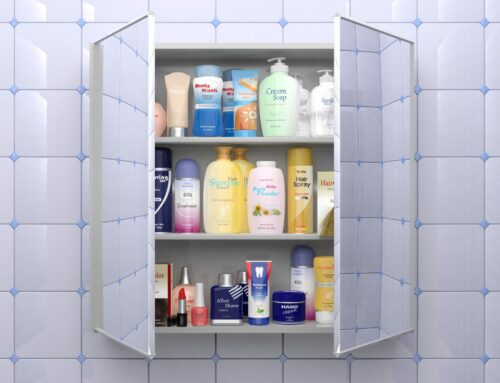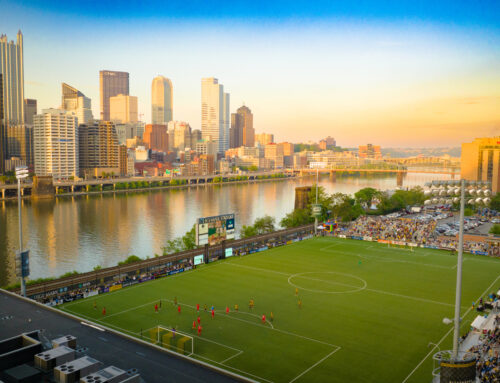At Brock USA, we’re dedicated to providing top-tier athletic surfaces, and our BrockFILL fields are a testament to this commitment. One of the key aspects of BrockFILL is its traction and grip qualities. Good traction is crucial for athletes who rely on quick turns and agile movements. Stability, consistency, and adequate traction with appropriate cleat release are vital characteristics of a playing surface that offers both safety and performance for the athlete. When an athlete plants a foot, pivots, jumps, lands, or runs, the characteristics of the playing surface upon which the movements are performed can influence the likelihood of a lower extremity injury, such as ankle sprains, ACL or PCL tears, and other soft tissue damage. Artificial turf surfaces with the right values of rotational resistance reduce the risk of injuries by providing stable traction, similar to a quality natural grass surface.
Further down the page, we dig deeper into the science behind rotational resistance, but for now, see for yourself! We have pulled together some highlight videos of top-level collegiate games played on BrockFILL surfaces over the past few years. Take a look at how these athletes grip and cut on this surface, and notice how little infill splash there is.
Camping World Stadium, Cheez-It Bowl 2022 – Florida State vs Oklahoma
Camping World Stadium, Citrus Bowl 2024 – Iowa vs Tennessee
Camping World Stadium, Pop Tarts Bowl 2024 – Kansas State vs NC State
Rice Stadium, Rice vs Houston 2023
Camping World Stadium, Under Armour Next All American Bowl | 2023
Camping World Stadium, Citrus Bowl 2023 – LSU vs Purdue
Camping World Stadium, Cheez-It Bowl 2021 – Clemson vs Iowa State
Understanding Rotational Resistance
Resistance to the rotation of a cleated foot is a measure used to characterize how a surface will respond when an athlete plants a foot and pivots. Too much resistance to rotation can cause the foot to become “fixed” to the surface, allowing potentially injurious forces to be transmitted to connective tissue in the foot, ankle, and knee. This type of twisting motion is a common cause of lower extremity injuries. Too little resistance can cause the athlete to lose footing or slip, which limits performance on the field and could lead to injuries. A good artificial turf surface, when coupled with the right footwear, should ideally provide enough traction to prevent the athlete from slipping, but not so much as to increase injury risk beyond that of a high-quality natural turf surface.
How BrockFILL Surfaces Stack Up
BrockFILL’s effectiveness is not just a claim but is backed by rigorous testing. BrockFILL undergoes extensive evaluation to ensure it meets or exceeds industry standards. The results from these tests show that BrockFILL fields provide good traction under various conditions, a crucial factor in athlete performance and safety.
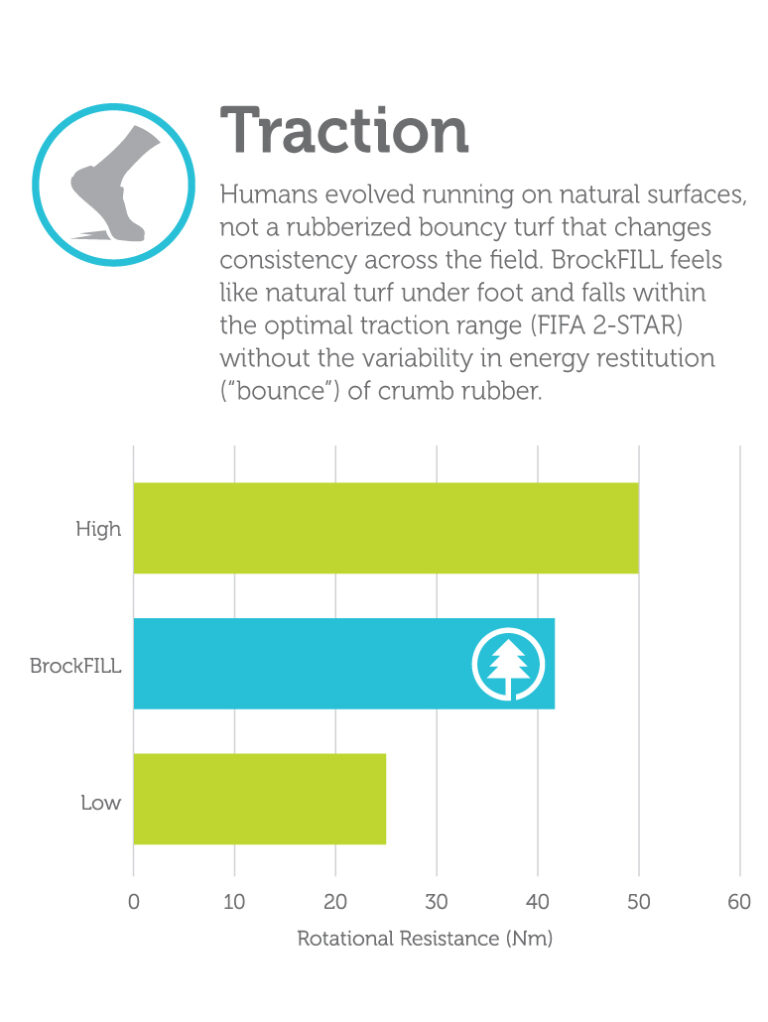
The Brock system with BrockFILL achieves consistently solid rotational resistance results, even with variability in maintenance. In the spoke chart below, each of the 32 fields that were tested varied in conditions, with some being well-kept and others receiving very little maintenance – but all of them had rotational resistance values within the recommended range (25-50 N∙m).
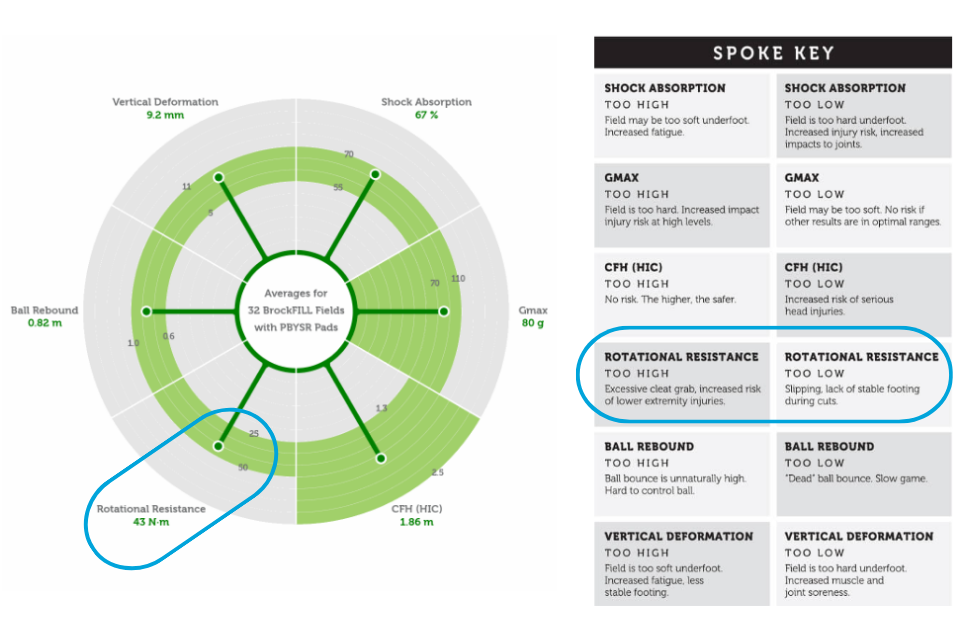
When you watch a game and see the plumes of crumb rubber fly up behind someone’s cleat, that is an indication of infill movement and foot sliding that can be avoided with a more stable infill. This instability is one reason athletes prefer to play on natural turf vs. artificial turf with rubber. Infill splash can be measured using high speed photography and customized software. When comparing infill splash between different materials, BrockFILL is clearly more stable than crumb rubber and has much less splash.
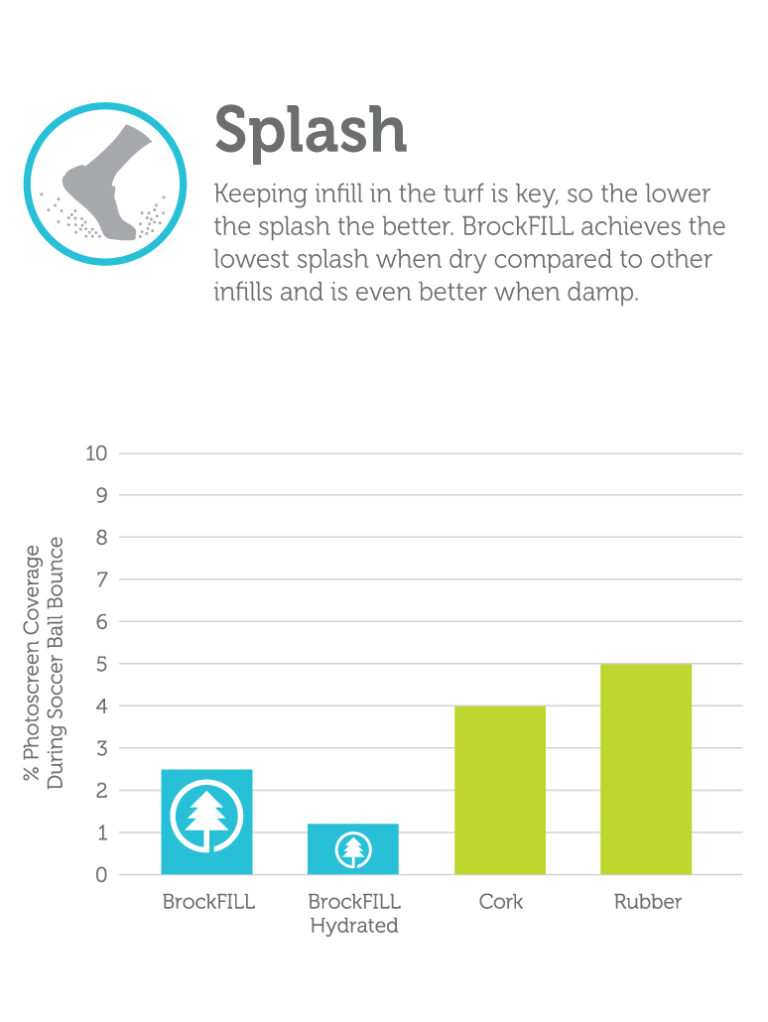
Using high-speed photography, you can see how natural grass or a more stable infill will provide better traction.
Public Perception
The public perception of artificial turf fields is largely shaped by concerns about player safety and injury risk. One professional sports league in particular, the NFL, has been under a microscope in recent years regarding the safety of artificial turf. Many NFL players have expressed a preference for natural grass fields, citing concerns about injuries. This has led to a significant debate within the NFL community, with the NFL Players Association going so far as to call for the elimination of artificial turf to enhance player safety. Half of the NFL stadiums currently use a range of artificial turf systems, but not all artificial turf systems are created equally, and there are ways to make an artificial turf field feel like a high-quality natural grass field underfoot.
As stated by NFLPA president JC Tretter, “Professional football players put extremely high levels of force and rotation onto the playing surface. Grass will eventually give, which often releases the cleat prior to reaching an injurious load. On synthetic surfaces, there is less give, meaning our feet, ankles, and knees absorb the force, which makes injury more likely to follow.”
However, with the right artificial turf system and good maintenance practices, these issues can be alleviated. BrockFILL systems consistently fall within the desired ranges for rotational resistance, and a well-maintained surface will offer consistent performance across the entire field. The videos at the top of this article, which include many future NFL players, show plenty of examples of elite cutting and grip on those BrockFILL surfaces with little to no infill splash.

